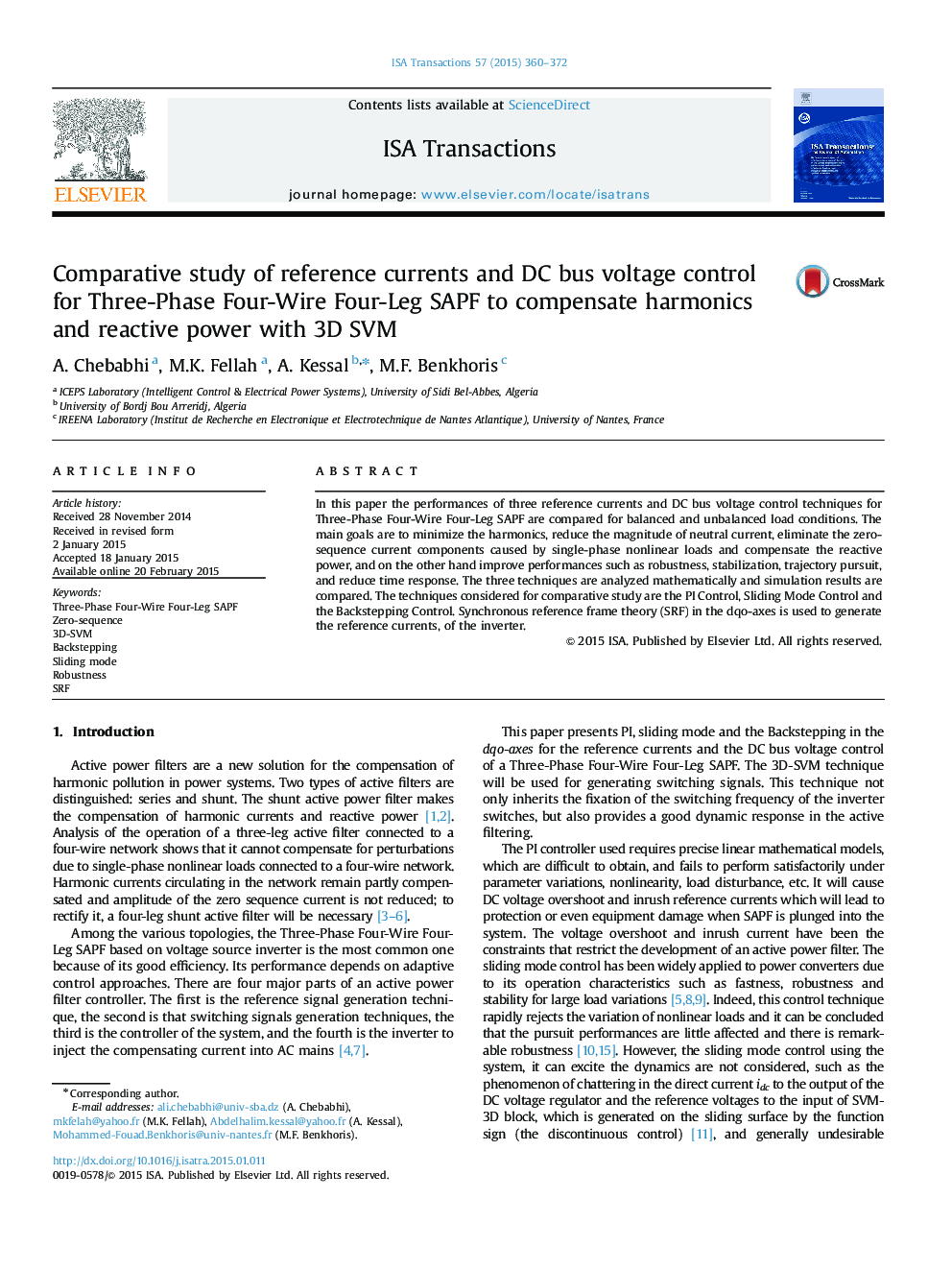| Article ID | Journal | Published Year | Pages | File Type |
|---|---|---|---|---|
| 5004445 | ISA Transactions | 2015 | 13 Pages |
â¢Three-Phase Four-Wire Four-Leg SAPF is studied.â¢Structure and principle are detailed.â¢Control based on sliding mode is applied.â¢PI Control, Sliding Mode Control and the Backstepping Control are compared.
In this paper the performances of three reference currents and DC bus voltage control techniques for Three-Phase Four-Wire Four-Leg SAPF are compared for balanced and unbalanced load conditions. The main goals are to minimize the harmonics, reduce the magnitude of neutral current, eliminate the zero-sequence current components caused by single-phase nonlinear loads and compensate the reactive power, and on the other hand improve performances such as robustness, stabilization, trajectory pursuit, and reduce time response. The three techniques are analyzed mathematically and simulation results are compared. The techniques considered for comparative study are the PI Control, Sliding Mode Control and the Backstepping Control. Synchronous reference frame theory (SRF) in the dqo-axes is used to generate the reference currents, of the inverter.
